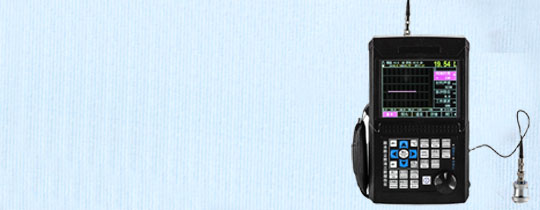
YJJ1 Inductive Proximity Sensor
The YJJ1 inductive proximity sensor can only detect metal objects, especially for ferrous metals, which can be better detected. However, when choosing non-ferrous metals, its detection distance will be greatly shortened. Stable performance is a commonly used detection method.
- ZHUOXIN
- 24v-110v-220v-380v
- IP65
- TT, Paypal, Credit card, Western union
- +86-15163766288
- The YJJ1 inductive proximity sensor can only detect metal objects, especially for ferrous metals, which can be better detected. However, when choosing non-ferrous metals, its detection distance will be greatly shortened. Stable performance is a commonly used detection method.
Description

YJJ1 Inductive Proximity Sensor Type 1, Variable Reluctance Electromagnetic Induction Law (M. Faraday 1831: When the current i in a coil changes, the magnetic fluxΦ generated by the current also changes, resulting in an induced electromotive force e on the coil itself), this phenomenon is called self inductance. The induced electromotive force generated is called self inductance. The structure of the variable reluctance proximity sensor is shown in Figure 1. It consists of a coil, an iron core, and an armature. The iron core and armature are made of magnetic conductive materials such as silicon steel or permalloy, and there is an air gap between the iron core and the armature with a thickness of&elta; The moving part of the sensor is connected to the armature. When the armature moves, the air gap thickness&elta; Changes occur, causing a change in magnetic resistance in the magnetic circuit, resulting in a change in the inductance value of the inductor coil. Therefore, as long as this change in inductance can be measured, the magnitude and direction of the armature displacement can be determined. The characteristic of variable reluctance sensors is that they have high sensitivity, which requires the amplification factor of the measured signal. However, they are affected by the air gapδ The influence of width on the measurement range of this type of sensor is very small. 2. The differential transformer type proximity sensor converts the measured non electrical quantity changes into coil mutual inductance changes, which is called a mutual inductance sensor. This type of sensor is made based on the basic principle of transformers, and the secondary winding is connected in a differential form, so it is called a differential transformer type sensor. There are many structural forms of differential transformers, including variable gap type, variable area type, and solenoid type. 3. The eddy current effect occurs when the metal conductor of an eddy current proximity sensor is placed in a changing magnetic field, causing an induced current to flow through the conductor like a vortex in water. The working principle of the YJJ1 inductive proximity sensor ordered by Shanghai Zhuoxin brand for direct sales is that the inductive proximity sensor consists of a frequency oscillation circuit, a detection circuit, an amplification circuit, a circuit, and an output circuit. The detection component is the detection coil, which is a component of the oscillation circuit. The oscillation frequency of the oscillation circuit is;. When the detection coil is energized with alternating current, an alternating magnetic field is generated around the detection coil. When a metal object approaches the detection coil, it generates eddy currents and absorbs magnetic field energy, causing a change in the inductance L of the detection coil, thereby reducing the oscillation frequency of the oscillation circuit and stopping the vibration. The oscillation and stop states are converted into switch signals through the monitoring circuit for output& nbsp; It should be noted that, like capacitive proximity sensors, inductive proximity sensors also detect metal conductors, and non-metallic conductors cannot be measured using this method. The amplitude change varies with the type of target metal, so the detection distance also varies with the type of target metal. Shandong Zhuoxin spot hairstyle number inductive type: can only detect metal objects, especially for ferrous metals, which can be better detected. However, when choosing non-ferrous metals, the detection distance will be greatly shortened. Stable performance is a commonly used detection method. Capacitive: capable of detecting metals, non-metals, glass, liquids, etc. Its detection distance is closely related to factors such as the conductivity constant, water content, and volume of the detected object. When using, it is necessary to ground the metal object, otherwise the switch will have a false effect. The tail is equipped with a sensitivity adjuster, which can adjust the distance. Hall type: using the Hall effect to detect the presence or absence of magnetic objects, usually a magnet. Stability, long detection distance; The detection distance is related to the magnetic induction strength of the magnet, and neodymium boron magnets are generally selected. Proximity switch LJ30A3-10-Z/BY. Three wire system,
Slipping switch OT-H-II U: 220VAC T: 1m/s
Proximity switch YJJ1
Detection switch RU100-CP40-AP6X2
Detection switch T.441-11yu-243
Coal conveyor belt slipping PSN40-20P
Limit switch Z4V7H 335-11z
Limit switch T 441-11Y-2512
Bucket wheel speed WF5200 HST04-3B(PNP) C24V
Four CXKG-30KH; Magnetic switch
Two wire normally open proximity switch
AS30-3415GK & 20-250V A Speed switch; R-II
Rope switch; RNS-II
Runaway switch; PNS-II
Speed detector H-S-CAC220V, 1 normally open and 1 normally closed
Two stage deviation switch GRPP-PT-01-I
Two way rope switch GRLS-P-02
Speed detector - H-F
Longitudinal tear detection device - ZL-B-II
Two way rope switch - HFKLT2-II-2A-220V/380V
Blockage switch - LM
& Level induction switch CLJ-E80-50ANA waterproof type
Slipping switch OT-H-II U: 220VAC T: 1m/s
Proximity switch YJJ1
Detection switch RU100-CP40-AP6X2
Detection switch T.441-11yu-243
Coal conveyor belt slipping PSN40-20P
Limit switch Z4V7H 335-11z
Limit switch T 441-11Y-2512
Bucket wheel speed WF5200 HST04-3B(PNP) C24V
Four CXKG-30KH; Magnetic switch
Two wire normally open proximity switch
AS30-3415GK & 20-250V A Speed switch; R-II
Rope switch; RNS-II
Runaway switch; PNS-II
Speed detector H-S-CAC220V, 1 normally open and 1 normally closed
Two stage deviation switch GRPP-PT-01-I
Two way rope switch GRLS-P-02
Speed detector - H-F
Longitudinal tear detection device - ZL-B-II
Two way rope switch - HFKLT2-II-2A-220V/380V
Blockage switch - LM
& Level induction switch CLJ-E80-50ANA waterproof type
Tags
Get the latest price? We'll respond as soon as possible(within 12 hours)

















